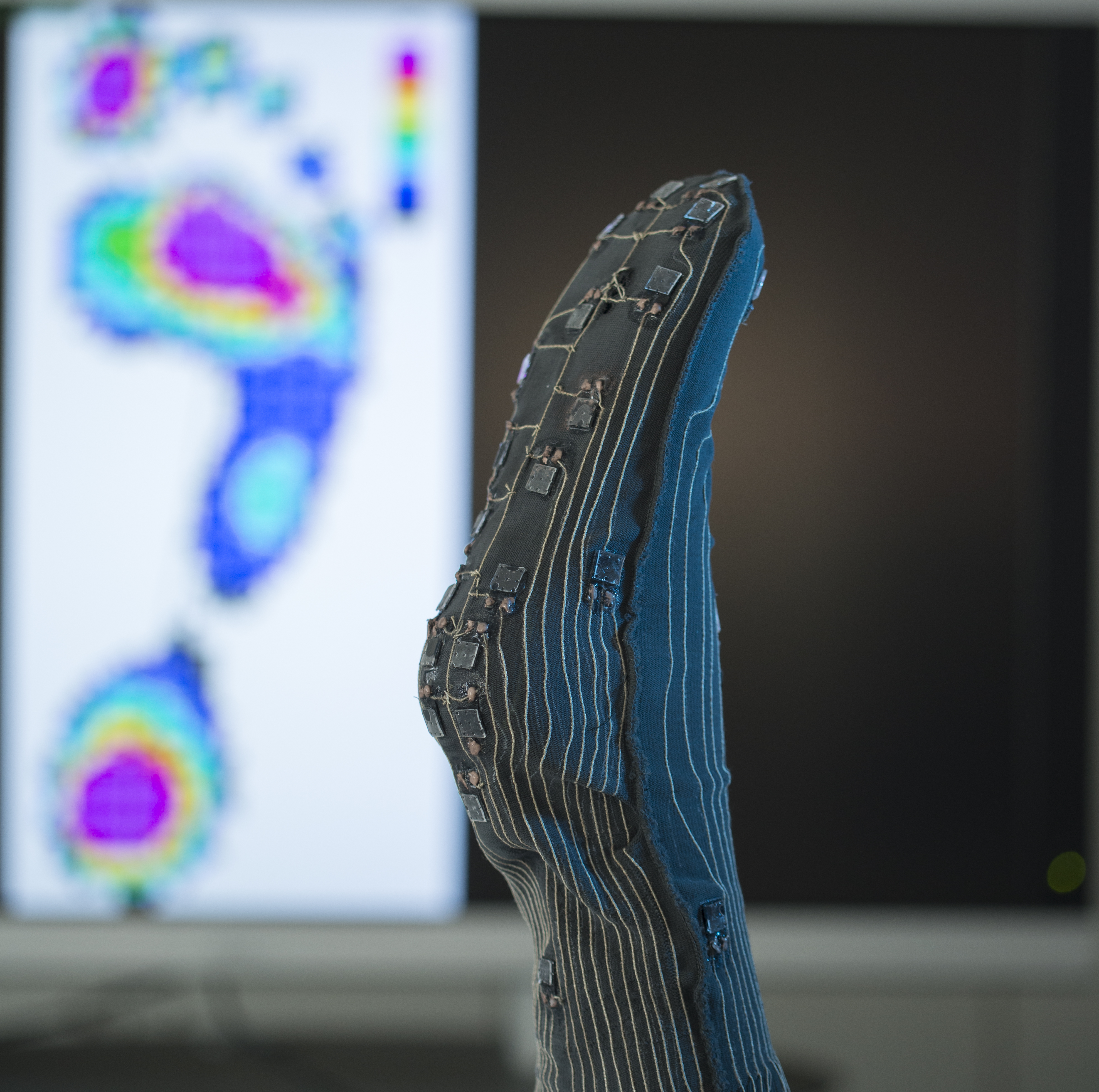Preventive Wound Protection – Pressure Monitoring Stockings for Diabetics

Diabetes is one of the most widespread diseases and can lead to serious consequences. According to the German Health Report on Diabetes 2014 of the German Diabetes Association, statutory health insurance companies estimate that approx. 20 percent of their annual costs are spent on the treatment of diabetes. In the advanced stages of the disease, many diabetics no longer have feeling in their feet and, therefore, cannot register pressure or temperature signals. They do not notice it when there is too much pressure in certain areas of their feet. Even small uneven
spots or shoe pressure can cause open wounds or tissue damage, which can lead to chronic wounds, if noticed too late. As a result, many diabetes patients have to have their toes or feet amputated. A new type of pressure monitoring stockings can prevent this. A sensor system integrated into the stocking warns the person wearing it of pressure sores.
Smart phones evaluate signals
The sensors are made of a very elastic, soft silicon film. This makes them easy to integrate into textiles without disturbing the wearer. The film is coated with highly flexible electrodes on both sides. If the film is deformed by pressure or stretching, its density decreases and its surface simultaneously expands. The result: The electric capacity increases. The change in the capacity of the 40 sensors is transmitted by conductive and elastic threads to an electronic evaluation unit. The evaluated data is transmitted wirelessly to a smartphone or tablet, which shows the diabetes patient whether he/she should change his/her foot position or weight distribution. This way the patient can react quickly and protect himself/herself from dangerous pressure sores.
Outlook
In order to guarantee washability, the project partners are now developing stockings from which the electronics can simply be removed like a Velcro fastener. However, commercial disinfectants already allow a hygienic treatment of the pressure monitoring stocking.
An additional area of application for sensors integrated into textiles is the area of fitness. Joggers, for example, would be able to check their running style and foot position when wearing the socks. It is also possible to manufacture gloves with sensors to equip robot grippers or prostheses. Further future developments make it possible to measure a person‘s posture in order for example, to prevent biomechanical stress due to prolonged sitting.
 Fraunhofer Group for Materials and Components - Materials
Fraunhofer Group for Materials and Components - Materials